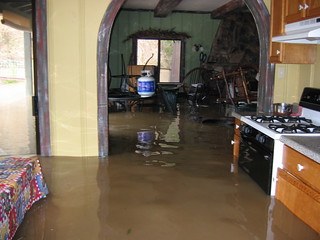

How to Handle an Emergency At Your Rental
However unlikely, you need to be prepared!
Real emergencies are thankfully rare, but they do occasionally happen — and when they do, you need to be prepared and act accordingly to avoid making the problem worse, minimizing your liability exposure and taking care of your tenants.
The most efficient way to handle an emergency is to get someone on the scene in a hurry. If you’re unable to go yourself, be sure you have someone on call you can trust. Stay in contact with them while they’re onsite as they may need critical direction.
 On Your Way
On Your Way
The moment you hear about an emergency, you (or a representative) should be on your way. As you proceed, attempt to contact the tenant by any means you know how. Call their land line, cell phone, work phone, text them — heck, tweet @them if you know their handle — and if you don’t get a hold of them personally, leave a message. Tell them what’s happening, the time and date, and what you’re attempting to do about it. You should also have your insurance company contact information handy as you may need an adjuster onsite as soon as possible.
When You Get There
A prepared landlord will have a master key that will open any door in the building. If you don’t, call a locksmith on the way there and have him meet you with a lockpick gun — and keep him there to get the locks switched and that master key cut ASAP.
As you approach the building, take pictures or video documenting what’s happening if the emergency is visible from the outside (like a fire or roof collapse). If the emergency is contained inside (burst plumbing, interior floor collapse), document that, too — but don’t spend too much time on it. Your priority should be to make a diligent effort to protect both your property and your tenant’s belongings from further damage, and those efforts should continue until the proper emergency response team departs the scene, satisfied that they’ve done everything they can. Provided, of course, you’re not endangering your own life in the process.
What Constitutes An ‘Emergency’?
- Someone shows up with a warrant/court order granting them access to the property
- Anything that presents an imminent hazard to the health or safety of the tenant and/or neighbors, but in particular:
- Water leaks
- Break-ins
- Fire
- Gas leaks
- Structural failure (or signs of imminent structural failure)
- Significant injury occurring on the property
Be Considerate
You should be conscious of the fact that people live in the building, even if you own it, and they have privacy rights and are concerned about the well-being of their belongings. Part of the reason you want to remain on-scene until the emergency response crew leaves is to avoid any claims by the tenant that something was stolen or treated inappropriately during the emergency. Similarly, part of the reason you want to document the emergency is to be able to prove to the tenant that your handling of their belongings was necessary to protect them.
Practicing these processes — even if it’s just a mental rehearsal of the steps and concerns you need to have once a month — will go a long way toward making sure that you’re ready when the unexpected becomes reality. Prepare for the worst, and hope for the best.

Comments (2)
Great idea!
Drew Sygit, almost 11 years ago
Always a good idea to make sure to show the tenants the main water shut off in case a pipe bursts while they are home.
James Wise, almost 11 years ago